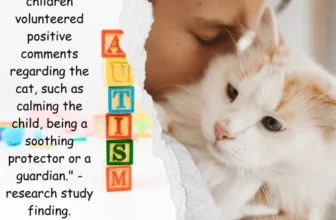Have you been considering adding a California Spangled Cat to your family but not sure how they would interact with your children? While cats can be great companions to children, it’s essential to understand a breed’s personality traits and prepare both your children and home appropriately. With their unique background and distinctive personality, California Spangled Cats are often intriguing to families. In this guide, we’ll explore the history and traits of California Spangled Cats, the pros and cons of their interaction with children, and how to prepare your children for a new feline friend. We’ll also provide tips on introducing a California Spangled Cat to your children and keeping everyone safe. Read on to learn everything you need to know about California Spangled Cats and their suitability for family life.
What are California Spangled Cats?

California Spangled Cats are an exotic breed of cats that have been attracting attention since the 1980s. They are a medium-sized breed that can weigh 8 to 15 pounds, and they come in a variety of coat colors and patterns. The most distinctive feature of California Spangled Cats is their unique wild appearance, which resembles that of leopards and cheetahs.
The California Spangled Cat was first developed by the late Paul Casey in the 1970s. The breed was created to be a domestic cat that embodied the beauty and grace of wild cats such as leopards, ocelots, and cheetahs. Casey was an animal lover and conservationist who hoped that the breed would encourage people to appreciate and protect endangered wild cats. The breed gained popularity after it was featured in an advertisement campaign for a car company in the 1980s.
California Spangled Cats are known for their affectionate and playful personality. They are highly intelligent and can be trained to do tricks and play games. They are also energetic and require plenty of playtime and exercise to stay healthy. The breed is generally sociable and enjoys interacting with other cats, as well as humans. However, like all animals, California Spangled Cats can display negative behavior such as aggression, territorial behavior, and destructive behavior. It’s essential to provide them with a positive and stress-free environment to prevent any negative behavior.
California Spangled Cats are known for their love of climbing, so it is important to provide them with ample space to climb. This means they will need things like climbing trees, cat trees, and plenty of vertical space. They also have an innate need to scratch, so providing them with scratch posts or boards will prevent destructive behavior such as scratching furniture.
California Spangled Cats are a unique and exotic breed with their wild-looking coat and playful personality. They are highly intelligent and active. However, before bringing one home, it’s essential to understand their personality traits, needs, and potential behavior problems. Providing them with a positive environment, training them early and taking care of their physical needs will ensure that they are a happy and healthy addition to any family.
History of California Spangled Cats
The California Spangled cat breed originated in the 1980s in California, USA. The breed was created by Paul Casey, who aimed to develop a domestic cat that resembled a wild cat, specifically the endangered American leopard. To create the California Spangled cat, Casey used a variety of breeds such as the British Shorthair, American Shorthair, Siamese, Abyssinian, and Egyptian Mau.
The California Spangled cat was intended to be a symbol reminding people of the importance of wildlife conservation. The breed became very popular in the 1980s, but since then, its popularity has declined. Nowadays, they’re considered a rare and exotic breed.
California Spangled cats are known for their unique spotted coat patterns, which are similar to those of leopards. They have a muscular and athletic build, which makes them excellent climbers. They’re also known for their intelligence and their curious nature. California Spangled cats are affectionate and friendly with their owners and can be quite vocal.
However, California Spangled cats can also exhibit territorial and destructive behavior if they don’t receive enough stimulation. These cats need plenty of toys and climbing structures to keep them entertained and active. They also need adequate space to move around and climb. Creating a cat-friendly environment is essential for the health and well-being of California Spangled cats.
The California Spangled cat breed is an exotic and unique breed that can be a great addition to a family with children. While they can have certain behavioral issues, such as territorial behavior or destructive tendencies, proper preparation and care can help prevent these issues. It’s important to establish rules for children and cats and teach them how to communicate and interact properly. By doing so, California Spangled cats can be great playmates and companions for children.
Personality Traits of California Spangled Cats
California Spangled Cats are an interesting breed with a unique personality. They are highly intelligent, curious, and playful. This breed is very social and enjoys the company of both people and other cats. They are known to bond closely with their owners and can be quite affectionate.
One of the most distinctive personality traits of California Spangled Cats is their high level of energy. They are a very active breed and need plenty of mental and physical stimulation to stay happy and healthy. This often means plenty of playtime with toys, climbing structures, and other forms of entertainment. California Spangled Cats are natural climbers and require a lot of vertical space for exercise and stimulation. Providing them with a cat tree or other climbing structures will keep them engaged and help prevent destructive behavior.
Another notable trait of California Spangled Cats is their territorial behavior. While they are social with other cats and people, they can be quite possessive of their space. This means that they may guard their food and water dishes, toys, and other areas of the home from other pets or children. However, with proper training and socialization, this behavior can usually be managed.
In terms of aggression, California Spangled Cats are not typically aggressive towards humans. However, they may become aggressive towards other cats or small animals if they feel threatened or uncomfortable. It is important to socialize them from a young age and provide them with plenty of positive interactions with other cats and people to prevent aggression.
California Spangled Cats are an intelligent and engaging breed that make great companions for both adults and children. However, because they are so active and require plenty of space, they may not be the best choice for apartment living or households with limited play areas. To learn more about the unique traits of California Spangled Cats, check out our guide on California Spangled Cat Personality Traits.
Interacting with Children: What to Expect

When it comes to interacting with children, California Spangled Cats can be very social and playful. They enjoy attention and love to play, which can make them a perfect fit for families with children. However, it is important to be aware of both the pros and cons of introducing a California Spangled Cat to your children.
Pros of California Spangled Cats with Children: California Spangled Cats are generally very patient with children and can tolerate a lot of handling and poking. They are not easily spooked and can handle the loud noises that are often associated with children. They make great playmates and can often engage in games such as chasing and fetching. They can also be very cuddly and affectionate, which can provide a great source of comfort for children.
Cons of California Spangled Cats with Children: On the other hand, California Spangled Cats can become aggressive if they feel threatened or if they are not given enough personal space. Their playful nature may sometimes lead to biting and scratching, which may not be suitable for younger children. Children may also not understand the territorial behavior of cats, which may cause stress to the cat and lead to destructive behavior.
Before introducing a California Spangled Cat to your children, it is important to prepare both the cat and children for the new arrival. This can include establishing rules for children and cats, teaching children about cat communication and body language, and making sure that the home is prepared for the new addition. It is also important to supervise the first interactions between the cat and children to ensure that both parties are comfortable.
To keep children safe around cats, it is important to teach proper cat handling, such as avoiding tail pulling or grabbing at the cat. It is also important to recognize signs of stress or aggression in cats, such as flattening ears or swishing tail, and to understand that cats may need climbing space and a designated area for their food and litter box.
California Spangled Cats can make great companions for children as long as both parties are properly prepared and supervised. They are social, playful, and affectionate cats that can provide a great source of comfort and entertainment to families. However, it is important to understand their behavior and needs in order to create a safe and happy environment for both the cat and children.
Pros of California Spangled Cats with Children
California Spangled Cats are often loving, loyal, and have a very playful personality, making them a great companion for children. One of the most significant pros of California Spangled Cats with children is that they are very social creatures who love attention and interaction with people. They are also highly adaptable and can easily adjust to living in a dynamic household.
Another great advantage of having a California Spangled Cat with children is that they are very energetic and enjoy playing games. Children and California Spangled Cats can spend hours playing together, which can be a great way for children to get some exercise and indulge in physical activity. This trait is particularly beneficial as it helps to prevent obesity and other health issues among children.
Additionally, California Spangled Cats are generally very affectionate and can be very cuddly. This pet can be a great stress reliever for children who need to relax and unwind after a long day at school. Children can also learn the importance of taking care of another living thing by helping to feed, groom, and take care of the cat’s basic needs.
California Spangled Cats can help children with developmental disorders such as Autism Spectrum Disorder (ASD). Studies have suggested that therapy animals can help alleviate emotional issues and anxiety in children with ASD. Having a California Spangled Cat can be beneficial for children with ASD because they can help them develop social skills, cognitive functions, and communication skills.
California Spangled Cats are a great choice for families with children because they are social, playful, energetic, and can help children with their development. However, it’s essential to remember that even though California Spangled Cats have many positive attributes, they also have some negative traits. Parents should be aware of the behavior of cats and take necessary precautions to ensure the safety of both the children and the cat. Please visit this link for more information on California Spangled Cats’ territorial behavior: /california-spangled-cat-territorial-behavior/.
Cons of California Spangled Cats with Children
While California Spangled Cats can be great companions for children, there are also some potential cons to consider before bringing one into a family with kids. One important factor to keep in mind is their level of energy and playfulness. California Spangled Cats are active, curious, and love to play, but this can lead to destructive behavior if they become bored or don’t have enough stimulation. It’s essential to provide plenty of toys and playtime, as well as designate areas for scratching to minimize damage to furniture and other belongings.
Another potential challenge is their need for climbing spaces. As natural climbers, California Spangled Cats require access to high perches, such as cat trees or shelves. While this can be an enjoyable experience for them, it may also pose a safety risk for young children who may attempt to climb up after them. It’s important to supervise interactions between young children and the cat to ensure their safety.
Lastly, California Spangled Cats are known for their independent personalities, which can sometimes manifest as aggression or aloofness. While this breed can be affectionate and gentle with children, it’s important to monitor their behavior and look out for any signs of discomfort or anxiety, as this can lead to aggressive behavior towards children. To prevent any potential conflicts or accidents, parents should educate their children on the proper handling of cats and teach them how to read feline body language. It’s also important to provide the cat with a safe and comfortable environment where they can retreat if they feel threatened or overwhelmed.
While there are some potential challenges in owning a California Spangled Cat with children, they can still make great companions and playmates for kids who are taught to respect their needs and boundaries. By providing a safe and stimulating environment for both the cat and child, and supervising all interactions, a California Spangled Cat can become a beloved member of the family.
Preparing Children for a New Cat

Preparing Children for a New Cat
Before bringing home a new California Spangled cat, parents should make sure that their children are prepared for the new addition to the family. Preparing children for a new cat is an important step in ensuring that the cat and the children have a harmonious relationship. Here are some tips to help prepare children for their new furry friend:
Establishing Rules for Children and Cats
It is important to establish rules for children and cats right from the beginning. Parents should explain to their children how to properly interact with a cat and set boundaries to make sure that both the cat and the children are safe. This includes instructing children not to pull the cat’s tail, ears, or whiskers, not to pick up the cat without adult supervision, and not to bother the cat when it is eating or sleeping.
Teaching Children Cat Communication and Body Language
Teaching children how to communicate with cats through body language is another important aspect of preparing children for a new cat. Parents can help their children understand the communication style of cats and learn to interpret their body language. For example, when a cat’s ears are back, it is a sign that they may be feeling scared or threatened. Teaching children these basic signals can go a long way in helping them understand their new furry friend.
Preparing the Home
Before bringing a new cat home, parents should make sure that the home environment is safe for the cat and children. This means ensuring that there are no hazardous objects or plants that the cat can ingest, and keeping breakable items out of reach. Parents should also make sure that the cat has its own space, such as a scratching post and a designated area for litter box use. This can help the cat feel more comfortable in its new environment.
Supervising the First Interactions
When introducing a new cat to children, it is important to supervise the first interactions. Parents should make sure that the children are calm and quiet and that they approach the cat slowly and gently. Children should also be instructed not to chase the cat or pick it up without supervision. This can help the cat feel more comfortable and prevent any potential harm to both the cat and the children.
Teaching Children Proper Cat Handling
Teaching children how to properly handle and interact with a cat is also a crucial aspect of preparing children for a new cat. Parents should show their children how to pet the cat gently and in the right direction, not to grab or yank on the cat, and how to hold and pick up the cat properly. These tips can help prevent any accidental harm to the cat and create a positive relationship between the children and the new family member.
Preparing children for a new California Spangled cat is an important step in creating a positive and safe environment for everyone involved. By establishing rules, teaching proper cat communication and handling, and preparing the home environment, parents can help ensure a smooth transition for the new furry member of the family.
Establishing Rules for Children and Cats
Establishing Rules for Children and Cats
Setting rules and boundaries is essential before introducing a new California Spangled cat to your home. Children need to understand how to behave around cats, and the cat needs to understand what is and is not acceptable behavior from children.
One way to establish rules for children and cats is to have a family meeting before bringing the cat home. Discuss with your children what behavior is acceptable around the cat. Let them know that they should not pull its tail, ears, or whiskers, and avoid rough play that may harm the animal.
It is also important to teach children to be gentle when petting the cat. They need to understand that aggressive behavior towards the cat is not acceptable and can be harmful to the animal.
Cats can be possessive of their toys and food, so establish boundaries for children around feeding and playing with the cat. Teach your children not to bother the cat while it is eating or playing and to respect the cat’s personal space.
By setting clear rules for children and cats, you can create a positive environment for both children and pets. The cat will feel safe and secure and will be less likely to display destructive behavior or aggression.
However, it is also important to note that cats can have unpredictable behavior, and children should be supervised when interacting with them. If your California Spangled cat displays destructive behavior, such as scratching furniture or biting, it may be a sign of stress or illness, and you should seek advice from a veterinarian or a professional cat behaviorist. Check out our article on California Spangled Cat Destructive Behavior to learn more.
Providing an appropriate environment for California Spangled cats is important, as they need enough space to climb and explore. You can learn more about the ideal environment for California Spangled cats in our article on California Spangled Cats Environment and California Spangled Cats Climb: Need for Climbing Space.
By establishing rules for children and cats, you can create a safe and enjoyable environment for both, where they can form a positive and loving relationship. With the right approach, your California Spangled cat can become a beloved member of your family.
Teaching Children Cat Communication and Body Language
It is important for children to understand how to read a cat’s body language and communicate with them appropriately. Teaching children cat communication and body language can help prevent situations where a cat might feel threatened or uncomfortable.
The first step is to teach children to approach the cat slowly and calmly, allowing the cat to sniff their hand if the cat chooses to do so. It is important to remind children not to grab or pull the cat’s tail, ears, or whiskers, as this can be painful and frightening for the cat.
Next, children should learn to recognize a cat’s body language. If a cat is arching their back and hissing, it is a clear sign that they are feeling threatened or uncomfortable and should be given space. Children should also be taught to recognize when a cat is purring, which can indicate that the cat is happy and relaxed.
Another important aspect of cat communication is understanding their vocalizations. Children should learn that meowing can mean different things for cats, such as hunger, loneliness, or simply wanting attention. They should also be aware of warning signs such as growling or hissing.
If a child needs to interact with a cat, they should know to approach slowly from the side instead of from above, to give the cat a clear view of their movements. It’s important to remind children to avoid sudden movements, as this can startle the cat.
Learning about cat communication and body language can help children and cats interact in a safe and comfortable way. However, even with proper communication and handling, it is important to always supervise interactions between children and cats to avoid any accidents. Be sure to check out our article on California Spangled Cats Aggression: Tips and Tricks for more information on keeping both your child and your cat safe. And remember to always monitor your California Spangled Cat’s behavior and health for any changes or signs of anxiety, which you can learn more about in our article California Spangled Cat Health and Behavior.
Introducing a California Spangled Cat to Children

Bringing a new pet into the home can be exciting, but it’s important to introduce them to children slowly and carefully. When introducing a California Spangled cat to children, there are a few steps to take to ensure a smooth transition.
Preparing the Home: Before introducing the cat to children, it’s important to make sure the home is set up to accommodate the new addition. Provide a comfortable space for the cat with toys, a litter box, food, and water. Make sure the children are aware of the cat’s designated space and that they respect it. Additionally, ensure that the home is safe for both children and cats, with no exposed wires or dangerous items.
Supervising the First Interactions: The first interactions between children and the cat are crucial. It’s important to supervise these interactions closely and ensure that the children are gentle and calm around the cat. Children should be taught to approach the cat slowly, using a soft tone of voice and gentle movements. The cat should be given the choice to interact or retreat, and children should never force interactions with the cat.
Teaching Children Proper Cat Handling: Children should be taught the proper way to handle a cat. They should be taught to never pull on a cat’s tail or ears and to approach them from the front. Additionally, children should be taught to pet the cat gently and avoid touching sensitive areas like the stomach and feet.
Recognizing Signs of Stress or Aggression in Cats: Children should be taught to recognize the signs of stress or aggression in cats. Signs of stress can include a cat flattening their ears, hissing, or swishing their tail. If the cat is showing signs of stress or aggression, children should be taught to leave the cat alone and give it space.
Conclusion: Introducing a California Spangled cat to children can be a great experience, but it’s important to take it slow and supervise interactions closely. By preparing the home, supervising interactions, teaching proper cat handling, and recognizing signs of stress or aggression, children and cats can live together in harmony.
Preparing the Home
Before bringing home a California Spangled cat, it is important to prepare the home for its arrival. One of the first things to keep in mind is that cats are naturally curious creatures and enjoy exploring. To avoid any potential hazards, it is essential to “cat-proof” the house.
Securing Hazardous Items: Before introducing the cat to your home, put away all hazardous or dangerous items that can harm the cat, such as sharp objects, toxic chemicals, and plants that are poisonous to cats.
Providing Adequate Space: California Spangled cats are active and require space to play, jump, and climb. It’s important to provide adequate space for your cat, such as a scratching post or a cat tree, where it can play, rest and explore.
Cat-Friendly Equipment: Make sure to provide your cat with cat-friendly litter boxes, food and water bowls, and toys that will keep it entertained.
Secure the Home: Ensure to secure windows, doors, and screens to prevent the cat from escaping outside. Keep all electrical cords in an area where the cat cannot reach them to avoid any potential electrocution hazards.
Taking these precautions can help create a safe and comfortable space for your California Spangled cat before its arrival.
Supervising the First Interactions
When introducing a California Spangled cat to children, it’s important to supervise the first interactions to ensure a positive experience for both the child and the cat. Accidents can happen, so it’s important to be prepared and take steps to prevent any negative encounters.
Introduce the Cat Slowly: Allow the child to approach the cat slowly and on their terms. Encourage the child to start by using soft voices and gentle movements. Never force a cat to interact or be held if it doesn’t want to.
Teach Proper Cat Care: It’s important to teach children how to properly handle and care for their new feline friend. Show them how to pet the cat gently and avoid pulling its tail or ears. Teach children when and how to feed the cat, as well as how to clean its litter box.
Create a Safe Environment: Make sure the cat has a safe space to retreat to if it feels overwhelmed or stressed. A cat tree or a quiet room with a comfortable bed will help the cat feel secure. It’s also important to remove any potential hazards that could harm the cat or child, such as small toys or breakable objects.
Monitor the Interaction: While the child and cat are interacting, it’s important to closely monitor the situation for any signs of stress or aggression. If the cat seems upset or starts hissing or growling, it’s important to remove the child from the situation immediately and allow the cat some alone time.
Supervising the first interactions between a child and a new California Spangled cat is crucial for establishing a positive and safe relationship. By taking the time to slowly introduce the cat, teach proper cat care, create a safe environment, and monitor the interaction, both the child and cat can form a loving and joyful bond.
How to Keep Children Safe Around Cats
Cats can be great companions for children, but it is important to ensure that both the child and the cat are safe during their interactions. Here are some tips on how to keep children safe around California Spangled cats:
Teaching Children Proper Cat Handling
One of the most important things to teach children is proper cat handling. Children should be taught to approach cats slowly and gently, allowing the cat to sniff their hand before attempting to pet them. Children should never pull a cat’s tail or ears, or pick them up without support. It is also important to teach children not to chase or corner cats, as this can cause stress and lead to aggression.
Recognizing Signs of Stress or Aggression in Cats
It is not always possible to prevent a cat from becoming aggressive, but recognizing the signs of stress or aggression can help avoid accidents. Signs of stress in cats include dilated pupils, flattened ears, and a twitching tail. Aggressive cats may hiss, growl, or even lash out with their claws or teeth. If a cat is exhibiting any of these signs, it is important to give them space and avoid triggering further stress.
Providing Safe Spaces for Cats
Cats need a safe space to retreat to when they feel overwhelmed. This can be a cat tree, a bed, or any other secluded space where the cat can feel safe and calm. It is important to teach children to respect a cat’s safe space and not to disturb them when they are hiding or sleeping.
Supervising Interactions
Children should always be supervised when interacting with cats, especially younger children who may not yet understand how to properly interact with them. It is also important to supervise any interactions between cats and other pets in the household, as well as interactions between cats and visitors to the home.
By following these tips, parents can help ensure that their children and California Spangled cats can enjoy a safe and happy relationship.
Teaching Children Proper Cat Handling
It’s essential for parents to teach their children how to properly handle their California Spangled cat to prevent injury to both the cat and the child. The following are some tips to ensure that children are handling their cat in a safe and gentle manner.
1. Use Gentle Touch
Children can often grab or squeeze a cat in excitement, which can cause discomfort and stress for the cat. Parents should teach their children how to stroke their cat’s body gently. Hands should be kept flat, and strokes should be smooth and slow. Children should be told to avoid pulling or tugging at the cat’s fur or tail.
2. Support the Cat’s Body
When a child picks up a cat, they should use both hands and support their cat’s body entirely. Holding cats by their legs or tail can contribute to injury and discomfort. Parents should teach their children how to place one hand under the cat’s chest or armpits, and the other hand under the cat’s hips. By doing so, they’ll distribute the cat’s weight and prevent injury.
3. Don’t Force Interactions
If the cat wants to walk away or isn’t in the mood for attention, children should learn to respect their cat’s boundaries. It’s essential to teach children that cats need their space and that it’s not okay to force interactions. Children should be taught to approach their cat slowly and to read their cat’s body language to decipher if they’re open to attention.
4. Avoid Rough Play
Although kittens enjoy playing rough, adult cats generally dislike it. Encourage children to avoid rough play like pulling on strings, waving sticks, or teasing their cat with toys. This type of behavior can cause cats to become aggressive.
5. Teach Children to Wash Their Hands
It’s critical for children to understand that cats can carry germs that can make them ill. It’s essential to teach children to wash their hands before and after handling their cat. This habit will prevent them from getting ill or passing any germs to their cat.
By following these tips, parents can be confident that their children are handling their California Spangled cat safely and humanly. By teaching children how to interact appropriately with cats, they will build healthy relationships and avoid any accidents or injuries.
Recognizing Signs of Stress or Aggression in Cats
As a parent, it’s important to teach your children how to interact with your new California Spangled Cat in a safe and respectful manner. One key aspect of this is recognizing signs of stress or aggression in your cat. It’s important to remember that cats, like humans, can become stressed or anxious, and this can manifest in a variety of ways.
Body language is a key indicator when it comes to recognizing stress or aggression in your cat. If your cat appears tense or agitated, their body language will reflect this. Signs of stress could include a stiff, arched back, flattened ears, and dilated pupils. On the other hand, signs of aggression could include a puffed-up tail, a flattened body, and a hissing or growling noise.
It’s also important to recognize changes in behavior that could indicate stress or aggression. If your normally friendly and sociable cat suddenly becomes withdrawn or aggressive around your child, this could be a sign that they are feeling stressed or anxious. Likewise, if your cat starts urinating outside of their litter box, this could be a sign of stress or a health issue that requires a trip to the vet.
As a responsible parent, it’s important to teach your children to recognize these signs as well. Encourage your children to approach your cat in a calm and gentle manner, and to respect your cat’s boundaries. If your cat does display signs of stress or aggression, it’s important to give them space and time to calm down. In some cases, seeking the advice of a veterinarian or animal behaviorist may be necessary to address any underlying issues.
By teaching your children to recognize the signs of stress and aggression in your California Spangled Cat, you can help to ensure a safe and happy environment for everyone in your household. Remember, cats are intelligent and sensitive animals, and with the right care and attention, they can make wonderful and loving companions for children of all ages.
Conclusion
In conclusion, California Spangled Cats can make great pets for families with children. However, as with any pet, it is important to carefully consider the responsibilities and potential challenges that come with cat ownership. It is always recommended to supervise interactions between children and cats to ensure the safety of both parties.
Overall, California Spangled Cats have a friendly and playful personality that can make them great companions for children. However, it is important to remember that each cat is unique and may have their own personality and preferences. It is important to introduce cats to children in a controlled and gradual manner to help them form a positive relationship.
Parents should also take time to establish clear rules for children and cats in the home to ensure the well-being of both. Teaching children about cat communication and body language can also help them understand and respect their feline friends better.
If you are considering adding a California Spangled Cat to your family, it is important to prepare your home and educate yourself and your children on proper cat handling and behavior. Remember, owning a cat is a long-term commitment, and it is essential to provide for their physical and emotional needs.
In summary, California Spangled Cats can be great pets for families with children who are willing to put in the effort to ensure a safe and positive relationship between their children and their feline companion. With proper training, education, and supervision, a California Spangled Cat can bring joy and love to your family for years to come.
Frequently Asked Questions
Can California Spangled Cats be kept as indoor pets?
Yes, California Spangled Cats can be kept as indoor pets. They are adaptable and can live comfortably in a smaller living space.
Do California Spangled Cats shed a lot?
California Spangled Cats have short, smooth coats and they do shed, but not excessively. Regular grooming can help reduce shedding.
Are California Spangled Cats hypoallergenic?
No, California Spangled Cats are not hypoallergenic. They do produce some allergens, so people with allergies may still be affected.
What is the lifespan of a California Spangled Cat?
The lifespan of a California Spangled Cat is typically 10-14 years if they receive proper care and nutrition.
Is a California Spangled Cat a good choice for a first-time cat owner?
California Spangled Cats can be a good choice for first-time cat owners as they are generally easy to care for and have a friendly personality.
Do California Spangled Cats get along with other pets?
California Spangled Cats can get along with other pets if they are socialized properly and introduced gradually. However, they may have a high prey drive towards smaller animals.
Do California Spangled Cats require a lot of exercise?
California Spangled Cats are known for their athleticism and agility, but they do not require a lot of exercise. Regular playtime and a healthy diet are sufficient for their needs.
What kind of diet is best for a California Spangled Cat?
A balanced and nutritious diet that includes high-quality protein, healthy fats, and essential vitamins and minerals is best for a California Spangled Cat.
Do California Spangled Cats have any health issues to be aware of?
California Spangled Cats do not have any breed-specific health issues, but they may be prone to common feline health problems like dental issues and obesity.
Are California Spangled Cats legal to own as pets?
Yes, California Spangled Cats are legal to own as pets in most states and countries, but it’s always best to check with local regulations before bringing one home.







